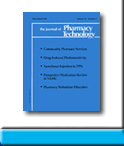 |
 |
VARIOUS DOSING WEIGHTS
AND CORRECTION TO SERUM DIGOXIN ASSAYS IN HEMODIALYSIS PATIENTS
Sumio Hirata, Koji Uenishi, Satoshi Izumi, Taku Furukubo,
Miyuki Ota, Minori Fujita, Tomoyuki Yamakawa, Hisakazu Ohtani, and Yasufumi
Sawada
To request full article click here.
BACKGROUND: Digoxin is distributed in skeletal muscles in high concentrations. The most reliable parameter to measure the distribution of digoxin in patients undergoing hemodialysis is not known.
OBJECTIVE: To estimate which distribution parameter–estimated lean body mass (E-LBM) calculated by subtracting the fat mass from the dry weight, lean body mass, dry weight, and ideal body weight–is the most reliable predictor for assessing the accuracy of a digoxin dosing regimen in patients undergoing hemodialysis.
METHODS: A retrospective study was conducted to evaluate 21 patients undergoing hemodialysis who were administered digoxin. The patients were divided into 2 groups: digoxin 0.125 mg administered twice a week (low-dose group) or 3 times per week (high-dose group). The differences between E-LBM, lean body mass, dry weight, and ideal body weight for the low- and high-dose groups were determined. The relationships between serum digoxin concentrations and the weekly digoxin dose per E-LBM, lean body mass, dry weight, and ideal body weight were also determined.
RESULTS: E-LBM, lean body mass, dry weight, and ideal body weight in the high-dose group were significantly larger than those in the low-dose group (p = 0.021, 0.015, 0.024, and 0.0029, respectively), although no significant difference in serum digoxin concentrations was evident. Significant correlation was found between serum digoxin concentrations and the weekly digoxin dosage per E-LBM, dry weight, lean body mass, and ideal body weight (r = 0.746, p < 0.0001; r = 0.638, p = 0.0014; r = 0.645, p < 0.0011; r = 0.553, p = 0.0083, respectively).
CONCLUSIONS: E-LBM appears to reflect the best parameter for predicting serum digoxin concentrations. The use of the dry weight parameter could be generally useful for adjusting the dosage of digoxin in patients undergoing hemodialysis.
J Pharm Technol 2004;20:221-5.
To request full article click here.
|
|
|
||
|

